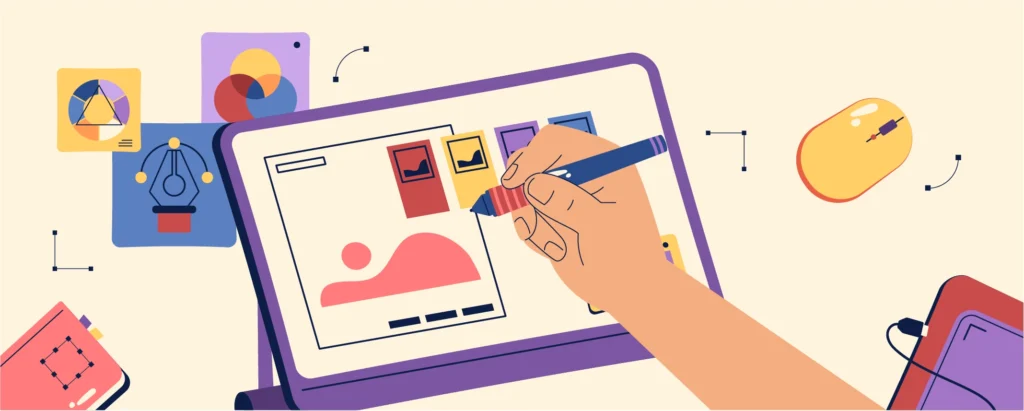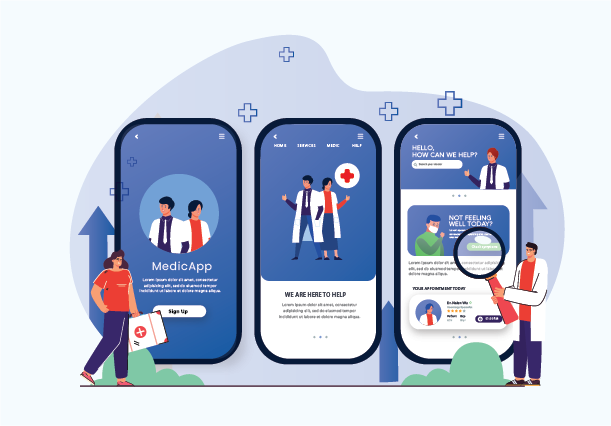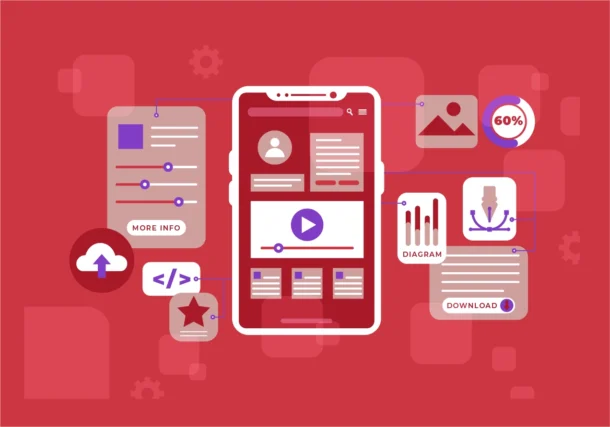Traversing the UX Design Project: From Concept to Creation
Imagine taking a simple concept and turning it into an engaging, interactive experience that surprises consumers everywhere. That’s the beauty of UX design, a process that combines creativity and accuracy from sketch to screen.
Starting the UX design process is like venturing out on a wide ocean; every step of the way helps to create a smooth and simple user experience. It begins with extensive research and brainstorming, exploring the target audience’s demands and problems. After that, designers proceed to wireframe and sketch, creating the framework for the interface, which is then refined through rigorous user testing and iterative prototyping. The last step is honing these concepts into polished, development-ready high-fidelity screens.
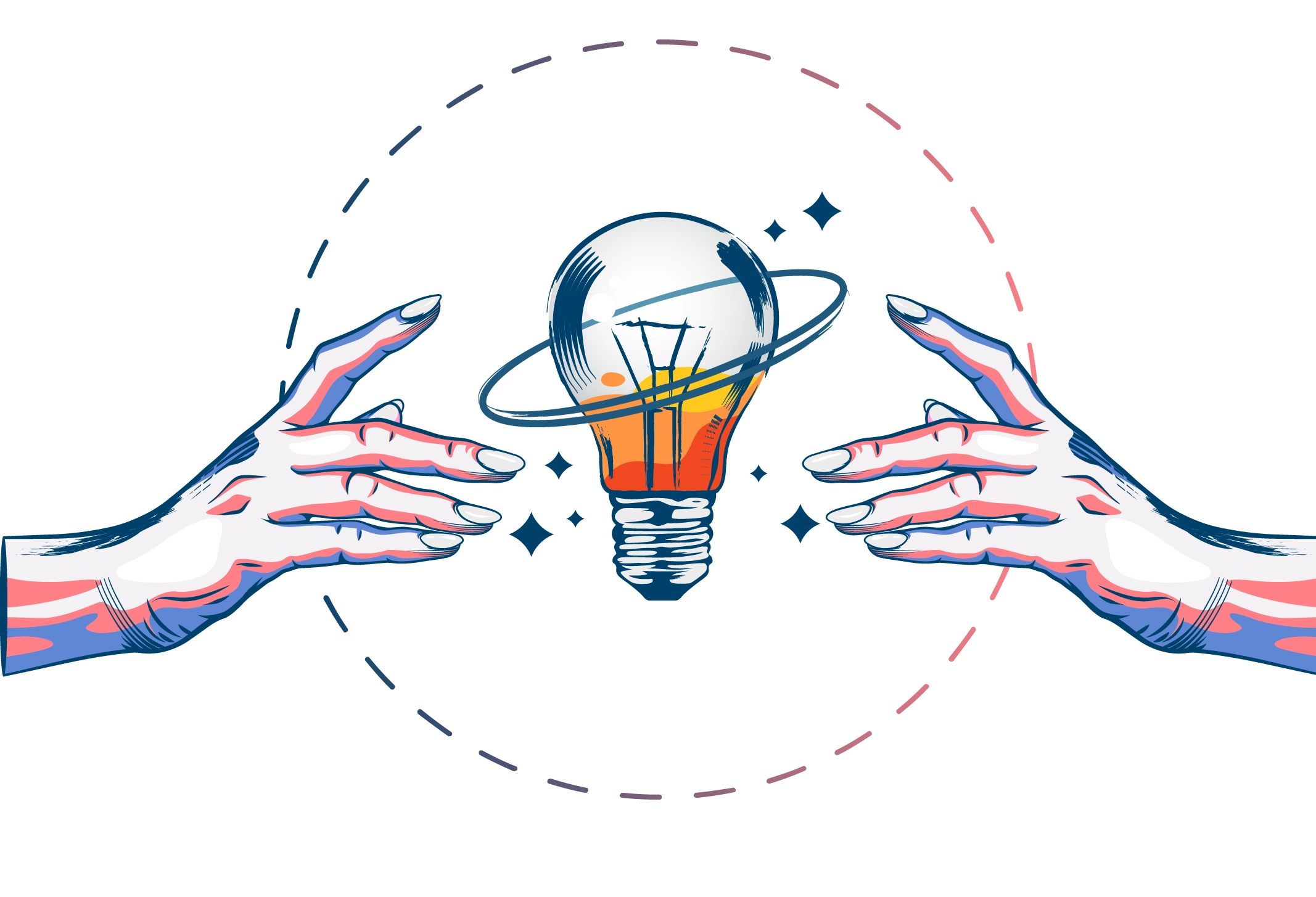
In a UX design project, a methodical approach is essential since it guarantees that each step is deliberate and builds on the one before it. This deliberate process not only creates a more efficient workflow but also encourages productive teamwork, which in turn produces a well-designed and integrated final result.
Intending to provide analysis and useful advice at every phase of UX design project management, this blog seeks to shed light on the journey from drawing to screen. The skills that readers will acquire include doing user research, producing eye-catching wireframes, building interactive prototypes, and iterating designs in response to user input. Aspiring UX designers will have the skills and information necessary to successfully negotiate the challenges of a UX design project at the end, guaranteeing that their creations are both creative and user-focused.
Igniting the UX Design Process: From Research to Realization
Knowing your users is the first step in starting a UX design journey. Making meaningful and powerful designs starts with collecting insights and doing in-depth user research. In-depth research into the lifestyles, habits, and tastes of the target audience is part of this phase. Methods include usability testing, interviews, and surveys are used to find out what the wants and problems of the users are. Through the collection of this vital data, designers can build a clear understanding of the target audience and the issues that need to be addressed.
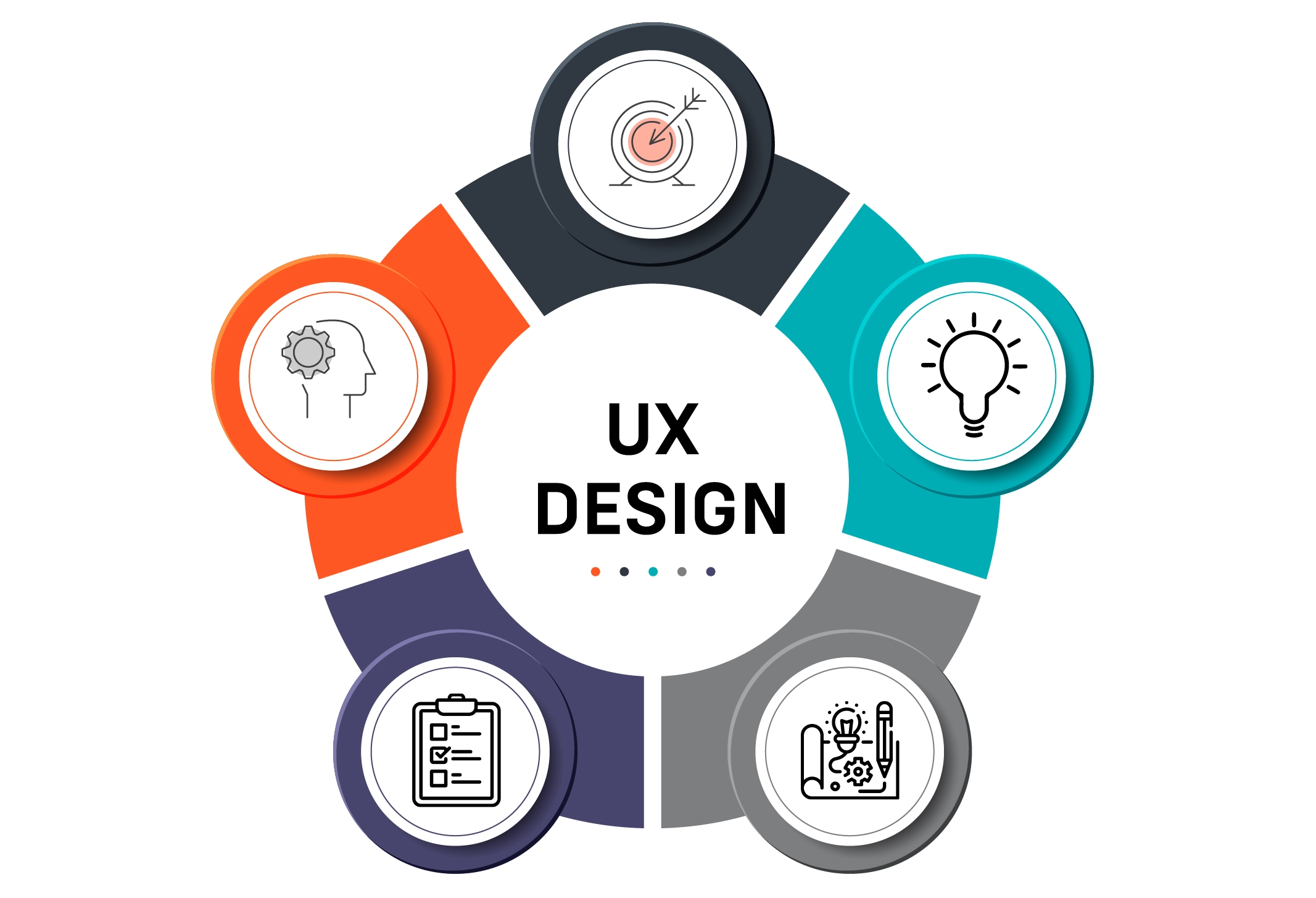
The next stage after conducting research is idea generation and brainstorming. Here is where strategy and creativity converge. Whether conducted in groups or individually, brainstorming sessions promote the free exchange of ideas. Innovative solutions and fresh viewpoints can be sparked by methods like mind mapping and the SCAMPER approach (Substitute, Combine, Adapt, Modify, Put to another use, Eliminate, and Reverse). Encouragement of all ideas, regardless of how unusual they may seem, is essential during this stage since they can result in ground-breaking thoughts.
The process of developing user personas and identifying needs becomes essential as concepts begin to take shape. The many user types that a product may be used by are represented by fictitious characters called user personas. These personas aid in humanizing the user experience design process and are created using the research data. They give a detailed picture of the objectives, habits, difficulties, and demographics of the target audience. By defining user demands under these personas, design solutions are guaranteed to be user-centric and to successfully tackle the fundamental problems that actual users encounter.
“How do we ensure that our ideas are truly aligned with user needs?” is a frequent query that comes up at this phase. Iterative design and continuous user input provide the answer. The ultimate design will not only meet but beyond user expectations due to this iterative process of conception, prototyping, and testing.
Crafting the Blueprint: The Art of Sketching and Wireframing
In UX design, the process from conception to creation is similar to that of constructing a house. A blueprint is necessary before the bricks are set. Discover the realm of wireframes and low-fidelity drawings, which are crucial components of your masterpiece of design. These rough drawings act as the visual basis, freeing up designers to explore and convey concepts without becoming caught down in the minutiae. Low-fidelity drawings are beautiful when they’re simple; they give an idea of the user interface and how interactions should flow visually, laying the groundwork for more intricate designs.
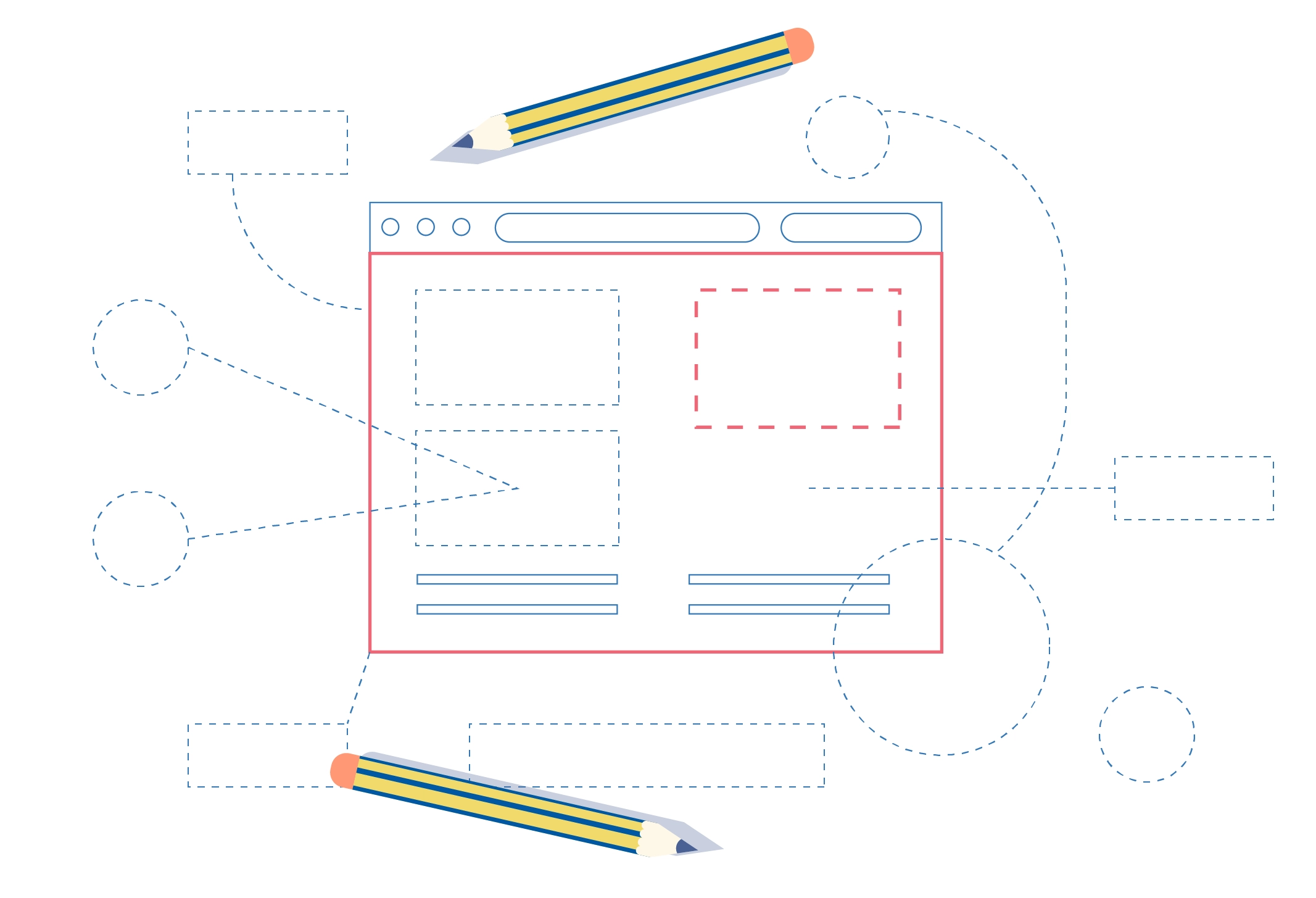
The following stage, called wireframing, is where these designs begin to take on a more definite shape. During this stage, the designer’s closest allies are efficient wireframing tools like Sketch, Figma, and Adobe XD. With the use of these tools, designers may produce intricate wireframes that show the application’s structure, arrange parts in the desired locations, and specify each component’s purpose. The use of grids and templates, among other techniques, guarantees coherence and uniformity across the design, transforming the wireframes from only a visual to a practical reference.
But wireframing isn’t a one-and-done deal. Feedback is vital to this iterative process. It is critical to offer preliminary wireframes to stakeholders and potential users for comments once they are complete. The magic happens in this feedback loop. By making revisions to sketches in response to this input, the design is improved and any problems and areas for improvement are found early on.
While wireframes should be sufficiently comprehensive to properly communicate the design goal, they should also be adaptable enough to allow for adjustments depending on user feedback. This incremental refinement ensures that the design is well-considered, user-centric, and ready for success when you move on to high-fidelity prototypes.
Bringing Ideas to Life: Prototyping and User Testing
It’s time to use prototyping to bring your idea to life after creating wireframes and sketches to lay down the blueprint. Interactive prototypes serve as a link between your original idea and the finished product, providing a concrete understanding of how your design will operate. Designers may produce high-fidelity prototypes that mimic in-person interactions with the use of tools like InVision, Figma, and Adobe XD at this stage. These interactive prototypes offer customers the ability to interact with the product as they would in the final version, giving important insights about the user experience. They go beyond just static photos.
When your prototype is complete, it’s time to physically put it to the test. As it offers firsthand input from the users of your product, user testing is an essential part of the UX design project ideas. User testing techniques range from unmoderated remote testing, in which participants engage with the prototype in their setting, to moderated sessions, in which a facilitator leads the participant through predetermined activities. Seeing how consumers engage with your design will help you spot any usability problems and provide insight into their entire experience.
The actual effort starts when user testing input is gathered and examined. This feedback is a treasure trove of details that might point out your design’s advantages and disadvantages. It is crucial to modify your design in response to this input, iterating and enhancing the design until the prototype satisfies user requirements and expectations. For example, you may need to make important services more accessible or streamline the menu layout if consumers have trouble browsing.
A common question that arises during this stage is, “How many users do we need for effective testing?” Although there’s no one-size-fits-all solution, most usability problems may often be found through testing with five to ten people. You can make sure that your finished product is not only functional but also intuitive and user-friendly by going through this iterative cycle of prototyping, testing, and refining.
Prototyping and user testing are ultimately about making sure the final product provides an amazing user experience and verifying your design decisions.
The Journey from Sketch to Screen: Delivering Exceptional UX
The process of UX design is a dynamic one that starts with ideation and research, moves via wireframing and drawing, and ends with prototyping and user testing. Creating a user experience that is not only aesthetically pleasing but also highly practical and intuitive requires careful consideration of every step.
Successful UX design project management initiatives are built on a foundation of constant iteration and improvement. By iteratively improving your ideas in response to customer input, you can make sure that the finished product fulfills user expectations and needs.
We at Pattem Digital are aware of the subtleties involved in this complex procedure. From the first concept to the last execution, our team of knowledgeable designers is committed to guiding your project and making sure the transfer from drawing to screen is smooth. Choose Pattem Digital as your User experience design company if you want someone who is dedicated to providing outstanding UX designs that improve your online experiences and help you succeed.
